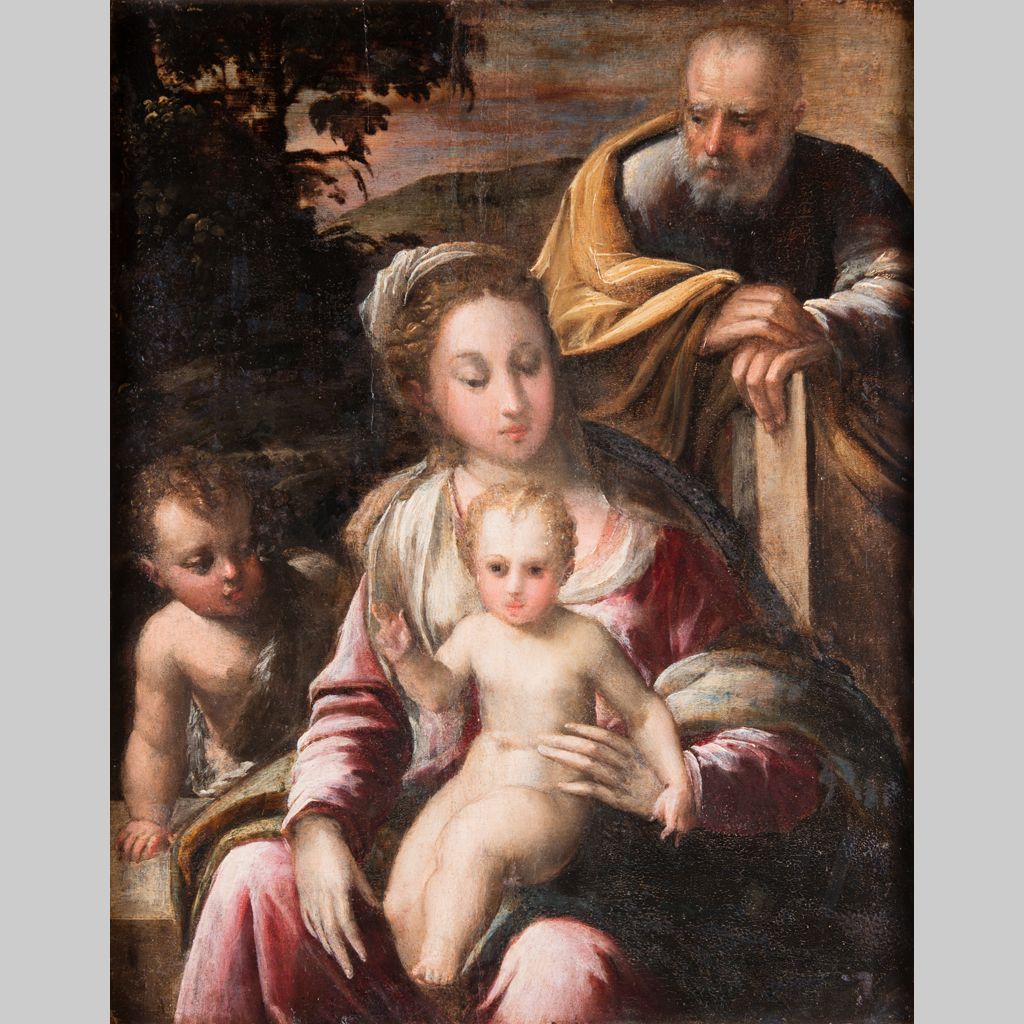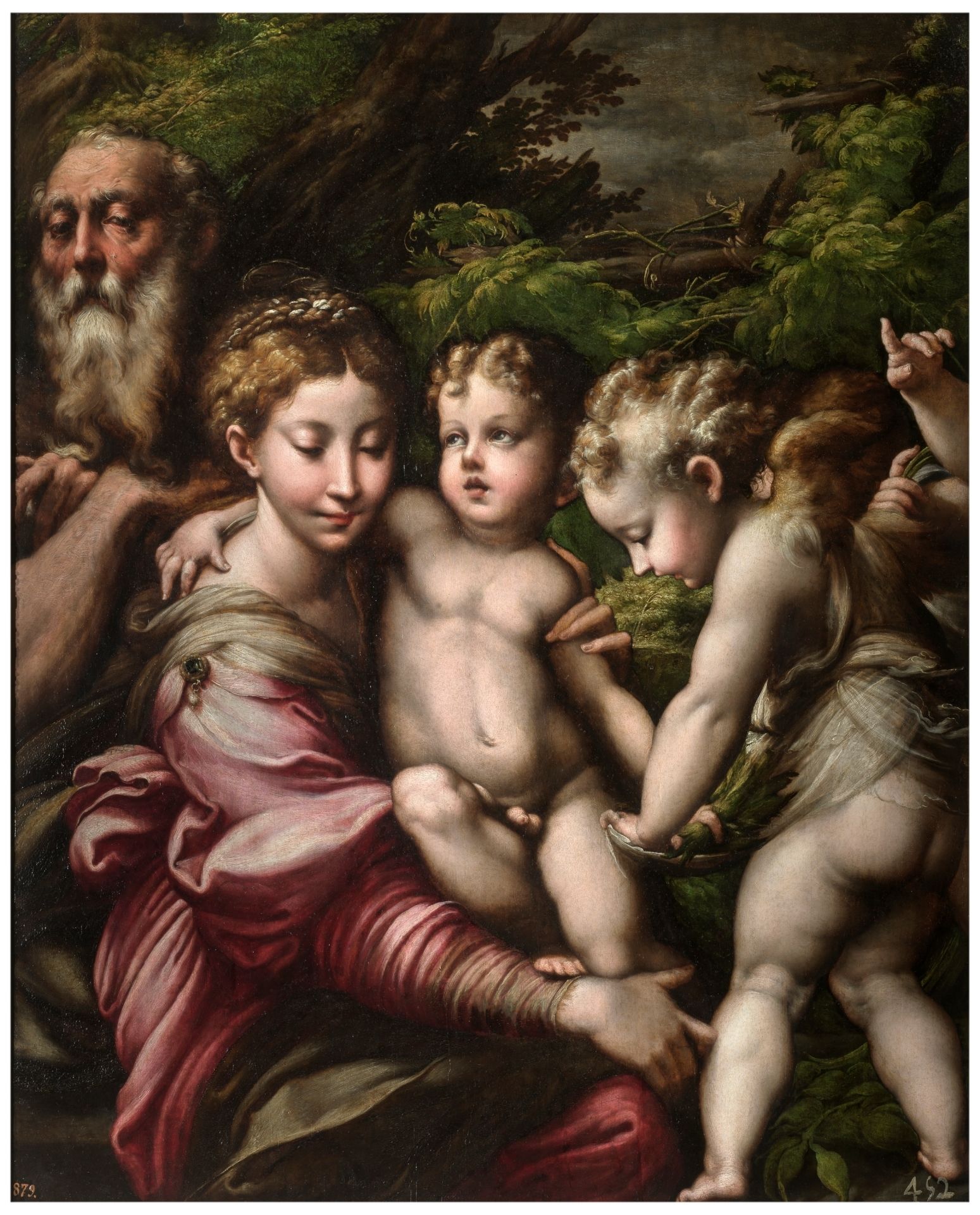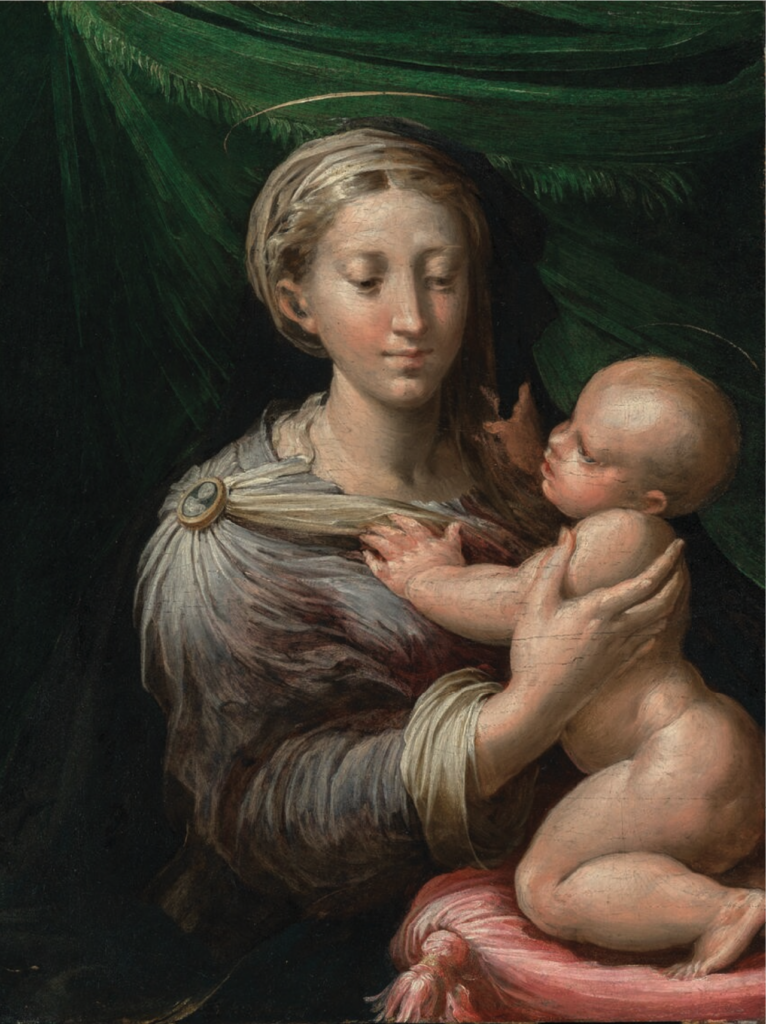Unknown artist (Emilian school)
Holy Family with St. John, mid- to late 16th century
Oil on panel
McMullen Museum of Art, Boston College, 1988.60

Stephanie C. Leone
Professor, Art History

First documented in 1933 in Bapst Library at Boston College, this graceful yet sturdy Madonna presents her child with an air of knowing confidence while he sits upright, ever so slightly springing forward, to bless the viewer. Mother and child are interrelated, yet autonomous, figures, connected by a deep human bond but aware of their sacred mission. Together, they foretell the future of the Christ Child, the Savior. The quasi-iconic central figures are offset by the diagonal placement of the elderly Joseph in the upper right corner and the infant John the Baptist at lower left, who dynamically leans forward to witness the Savior. The universal Catholic subject and the small dimensions indicate that the painting functioned as a private devotional work. The idealized beauty of the Madonna symbolizes her inner, spiritual grace.
The refinement of the poses, the physiognomies of small, elongated features, the preciosity of details, such as the tight curls of John the Baptist’s hair, and the complex coloristic effects in the draperies and the sky, recall the work of Parmigianino (Girolamo Francesco Maria Mazzola, 1503–40). Trained by his printmaking family in Parma, in the Emilian region of northern Italy, Parmigianino displayed a precocious talent for painting. In 1524, the young artist moved to Rome, where he sought to become a new Raphael, the great Renaissance painter who had died four years earlier. To win the patronage of Pope Clement VII, Parmigianino brought with him his first mature work, the Holy Family with Angels, c. 1524, now in the Museo del Prado (see image). In Rome, he made devotional paintings that combine the lessons of Raphael as well as Leonardo and Michelangelo, with his distinctive idealism and elegance known as mannerism, as seen in the Madonna and Child, c. 1527–30, in the Kimbell Art Museum (see image).
Despite the affinities of style between the McMullen Holy Family and these paintings, differences in the handling of the paint suggest that this painting is not by the hand of Parmigianino but rather an as-yet unidentified painter of the Emilian school following the master.


